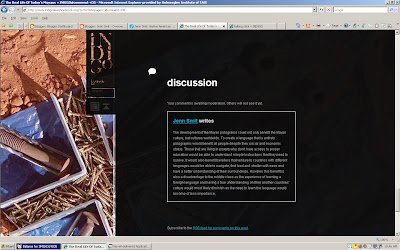1. The first in the bottom left corner is derivative from the words 'net' and 'shell'. The top thumbnail depicts a shell which related to the birth of Aphrodite from the sea. The shell is rendered using the pattern of a water polo net combining a feature of the game with a motif associated with the Greek God.
2. The second concept was inspired from the words 'ball' and 'birds'. This concept is further developed from the initial logo ideas posted in the Clash of the Titans blog posted a few weeks back. The use of imagery relating to both the sport (ball) and the Greek God (swan – Aphrodite is often depicted riding upon the back of a swan or goose) combine to create an interesting emblem (second from the left at the bottom of the page). From here I further developed the design to exclude the imagery of the ball and focus on the shapes that can be created with the shape of the swan's neck using reflection and stability as a base. This concept is continued below.
3. For the third concept I attempted to create a typographic design inspired by the words 'condensation' and 'feather'. The first thumbnail was created using inspiration from the American logos we looked at last week. The simplistic imagery accompanied with text all on an angle creates a simple yet striking dynamic design. Another idea was the capital 'A' created out of feathers and enclosed within a shiny, transparent, circular shape representing 'condensation' and could also be interpreted as a representation of the ball used. I returned to this idea further up the page using a lowercase 'a' as a replacement. This development helps distinguish the graphic from the similar 'anarchy' symbol, however it still has this connection which is inappropriate for the status and professionalism of the team.

The shape created initially was reminiscent of an 's.' It was only logical to follow this connection and use the shape as the main focal point within a typographic logo. This design will allow for use of the 's' shape only as a symbol only, or accompanied with the type as an alternative typographic design. I began to look as the proportion of the 's' shape, and tried to make them emulate a womanly figure to further connect the design to Aphrodite and women in general. This doesn't really seem to be coming through yet, more development is needed. I have also begun thinking about the negative space the shape creates. I am thinking of incorporating the water polo ball using the negative space within the design, or perhaps water droplets/splashes to further connect the design to the water aspect of the sport and also the birth of Aphrodite. This is only in the very beginning of this idea, I have yet to explore it on paper.
When researching the colours used in Olympic Water Polo, it is not surprising to see teams represented using their national colours. The most common colours used were blue, nay blue, red, white green and yellow. The Colours of the Swedish flag is blue and yellow. Using these colours in the logo design would successfully link the team to their country, however these colours are overused in the league, and wouldn't help make the team stand out. An idea is to use either pink or purple in the design to help distinguish the team from others within the league. This colour choice is not only because they aren't represented within the league, but also because they are sacred to Aphrodite and represent femininity.




